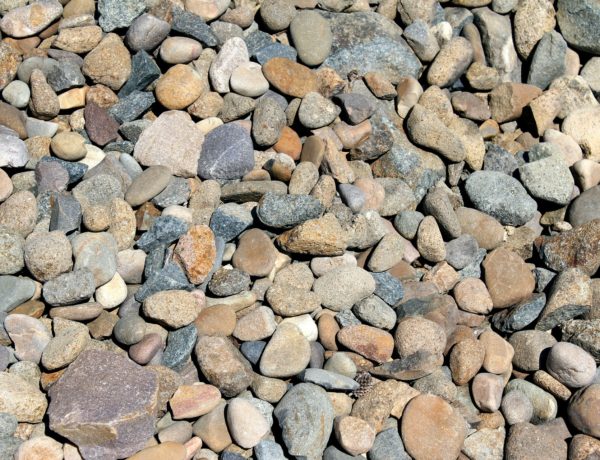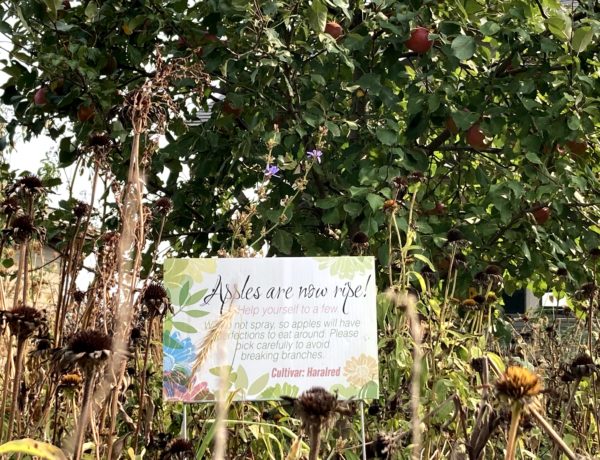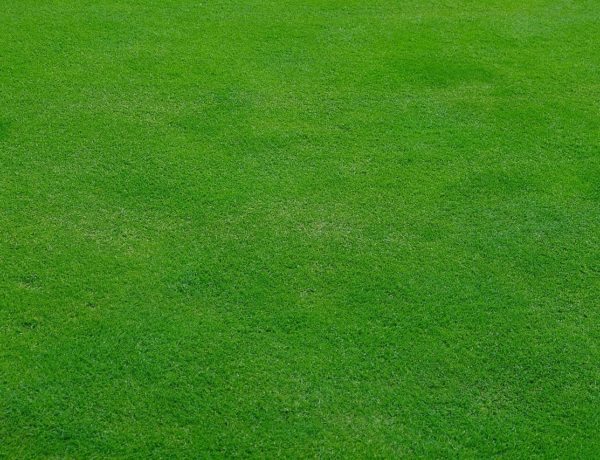To increase productivity the natural way, permaculturists often create guilds. A guild is a group of plants that perform many different functions and work together to help out not only each other but also usually a central performer (normally fruit trees).
Three sisters guild
A popular very simple guild is the Native American three sisters planting. This guild is comprised of corn, pole beans, and squash. To learn how to plant a three sisters garden, check out this lesson plan at Cornell. These plants are planted closely together, but they occupy different locations in time and space so they don’t compete. Rather, they help each other out. The corn provides a trellis for the pole beans, and the pole beans do not affect the growth of the corn — in fact, they help it by fixing nitrogen. The squash grows outward and fills in, shading any exposed soil to suppress weeds for all the plants.
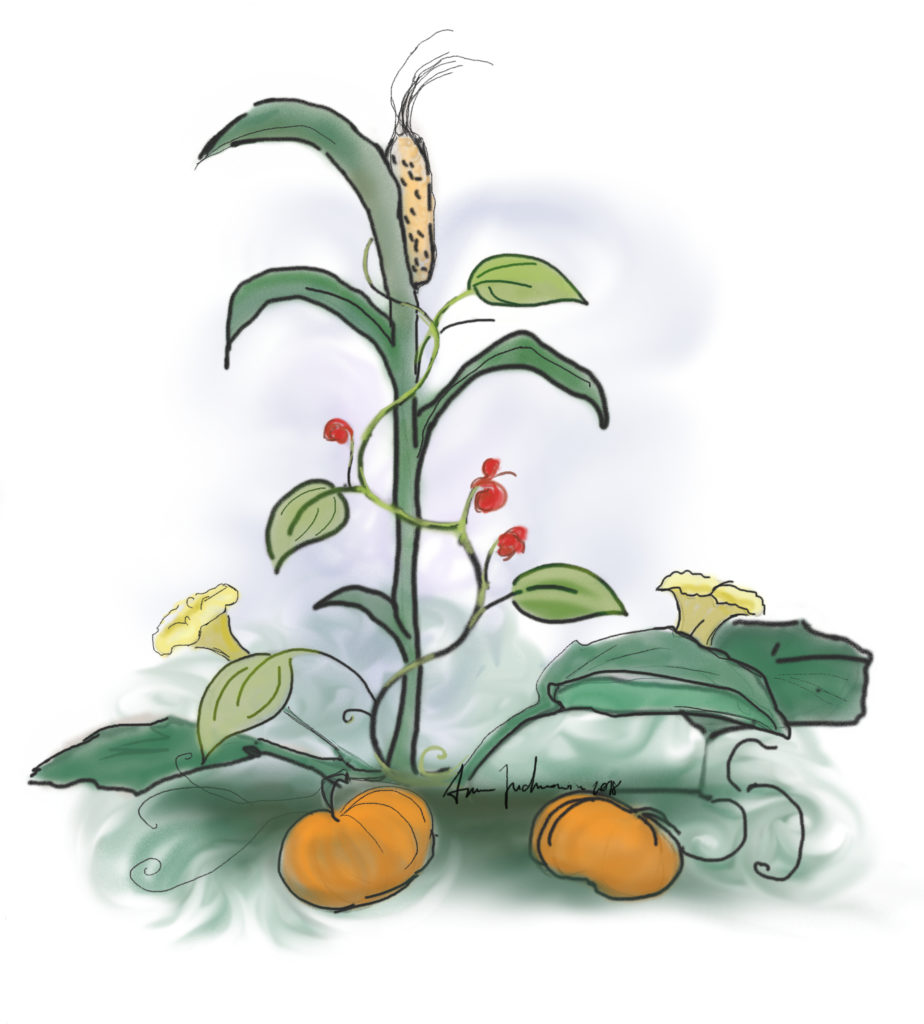
Lessons learned
A guild in permaculture is more complex and usually comprised of more permanent plantings that don’t have to be replanted year after year. A popular post on my old personal blog was about my front yard apple tree guilds. These guilds have evolved a lot over time, and I have learned a lot from them.
For example, I did start by trying to place the plants exactly where I had planned them in the designs I drew. But eventually I just started broadcasting seeds. I’m glad I didn’t put too much time into painstakingly placing each plant and seed, because these plants just grow, spread, and reseed however they please anyway. And of course I let them, because they know where they need to grow and where they can’t grow.
I planted an apple tree in each bed. In one bed, the apple tree was killed by a rabbit who girdled it over the winter. Lesson learned… always protect the base of young trees! Those poor mammals are hungry in the winter. Interestingly, any tree that I tried to plant there after its death died within one year. I eventually declared that spot a dead spot and moved the cage to plant a new plum a few feet away. Success! Is that spot haunted by the first apple tree? Did its death alter the soil or soil life in some way? I don’t know, but being flexible and going with the flow is very important for a natural gardener.
Guild roles
All of my gardens include guilds. I thickly plant and allow the plants to grow and spread however they please. This is the easiest way to garden. The plants themselves suppress weeds, create their own mulch, and help each other with pollination, pest management, fertilization, soil conservation, and more. Planting gardens to mimic natural ecosystems (with a tweak to use mostly plants that are useful to you if you like) is your best bet in replacing your lawn with something that requires less maintenance than a lawn.
The goal of guild planning is to incorporate plants that fulfil the roles we think are important in nature. I say “we think” because, honestly, I don’t think our human brains will ever be able to fully understand the infinite complexity of natural ecosystems. But that’s okay, because nature is everywhere, and whenever we let her, she’ll step in and help. So here are some of the major roles we like to incorporate.
Nitrogen fixers
You can see my full blog post about nitrogen fixers by following this link. These plants utilize a symbiotic relationship with bacteria to add nitrogen to their own bodies. Then when the plants die or are chopped and dropped that nitrogen is added to the soil and the system. Some popular nitrogen-fixing plants are:
- Clover
- Groundnut (Apios americana)
- Hog Peanut
- Peas
- Beans
- Lupine
- Groundplum Milkvetch
- Wild Indigo
- New Jersey Tea
- False Indigo
- American Licorice
- Leadplant
- Goumi
- Seaberry
- Silver Buffaloberry
- Caragana Pea Shrub
Pollinator attractors
Anything that flowers just before your fruit trees flower will help bring in extra pollinators to help pollinate your fruit trees. Even if you don’t think your fruit trees need help in this department, it is always good to have lots of pollen and nectar sources for pollinators in the early spring, because food sources are often lacking for them at this time of year. Plus, who doesn’t want colorful flowers as soon as possible! Here are some options:
- White Clover
- Dandelion
- Strawberry
- Prairie Violet
- Tulip
- Solomon’s Seal (a shade-loving plant)
- Columbine (another shade-lover)
- Prairie Flax
- Grape
- Gooseberry
- False Indigo
- Sand Cherry
- Nanking Cherry
- Goumi
- Hazelnut
- Caragana Pea Shrub
Beneficial insect attractors
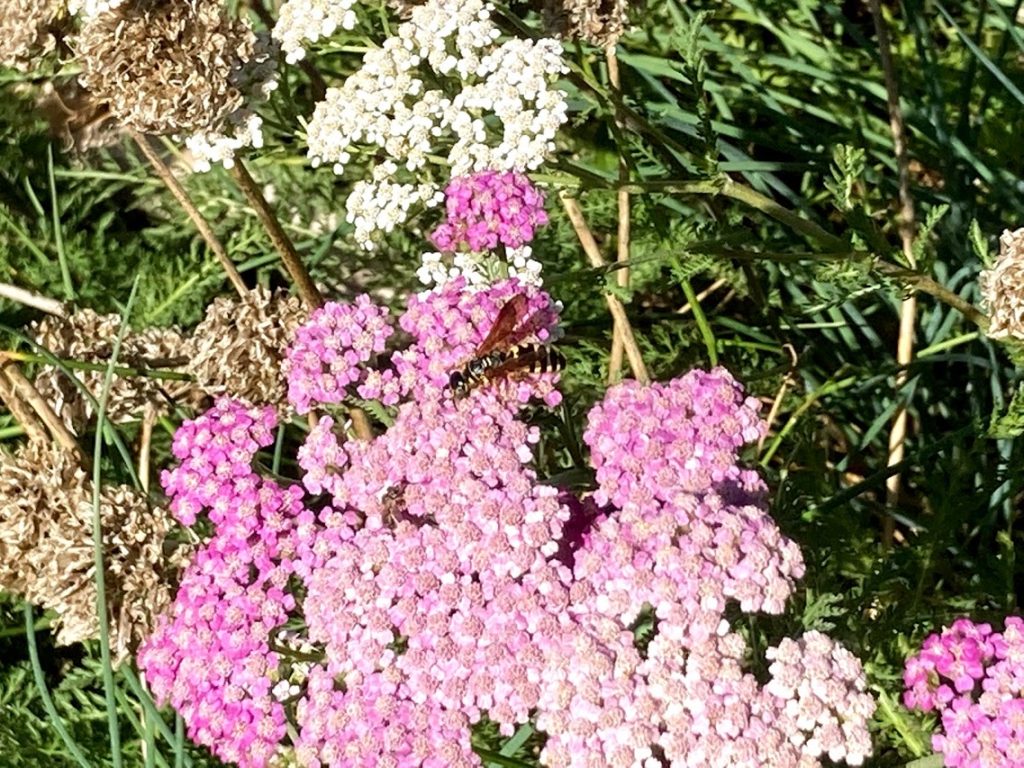
These plants attract insects that eat or parasitize insects that would be considered pests in a garden or food forest.
- Yarrow
- Milkweed
- Cilantro
- Dill
- Asparagus
- Lovage
- Queen Anne’s Lace
- Trees and shrubs particularly provide good habitat for beneficial insects, birds, bats, and other animals that consume pests.
Pest confusers
These plants, usually with strong fragrance, and especially when interplanted in a natural way, can throw insects and animals off when they come around looking for food. Think of the buffet of straight rows of tomatoes surrounded only by bare soil versus tomatoes planted here and there amongst other plants with different smells, textures, and tastes.
- Mint Family (Mint, Bergamot, Bee Balm, Lemon Balm, Catnip, Anise Hyssop, Chinese Artichoke, Oregano, Thyme, Sage, Lavender)
- Carrot Family (Dill, Fennel, Skirret, Parsley, Prairie Parsley, Sweet Cicely, Lovage, Queen Anne’s Lace)
- Allium (Onion) Family (Common Chives, Garlic Chives, Garlic, Evergreen Onions, Ramps, Leeks, Bulb Onion, Wild Garlic, Walking Onion)
- Chamomile
- Horseradish (if trampled or sampled)
- Trap crops — These plants attract pests to themselves and possibly away from plants we more highly value. For example some people don’t value mulberry as highly as other fruit crops ripening at the same time and will use mulberries to busy the birds. Virginia creeper attracts Japanese beetles away from other plants where the birds happily munch away at them.
Soil Penetrators
These plants have deep root systems and do particularly well breaking up compacted or hardpan dirt, allowing water to better penetrate into the soil and soil life to better thrive.
- Dandelion
- Mustard
- Purple Poppy Mallow
- Yarrow
- Milkweed
- Rose
- Caragana (Pea shrub)
- Salad Burnet
- Desert Biscuitroot
- American Ginseng
- Scorzonera
- Garden Sorrel
- Liatris
- Horseradish
- Bush Morning Glory
- Leadplant
- Chicory
- Perennial Sunflowers
- Lovage
Biomass producers
These are plants that grow a lot and we chop and drop and/or leave dead matter where it falls. Read: free mulch.
- Comfrey
- Orach
- Silver Buffaloberry
- Anise Hyssop
- Sunchokes
- Sunflowers
- Daylilly
- Wild Indigo
- Bee Balm
- Raspberries
- Ferns
- All trees and shrubs, particularly deciduous
Take your guild home
These are just a few examples. The options and combinations are endless! These plants will work together and work with wildlife to help produce a healthy balance, essentially forming a little ecosystem, or as close to a mimic of the wonder of nature’s intricacy that we humans can manage.
In particular, if you are looking for a way to replace your lawn with something that is more sustainable, better for wildlife, and produces food and medicine for you while also requiring less maintenance than a typical American lawn, a thickly-planted natural garden made of plants that work together (a guild) is exactly what you need.

